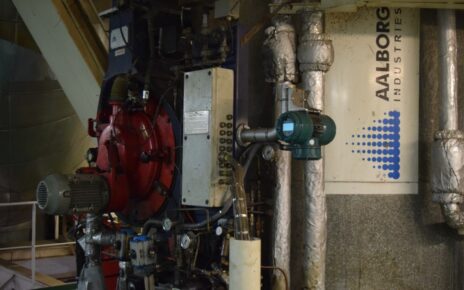Follow up & non follow up in steering of a ship. Steering a ship is one of the most important and challenging tasks for a helmsman. The helmsman is responsible for keeping the ship on course and avoiding collisions with other vessels or obstacles. To do this, the helmsman must use the steering wheel or the steering lever to control the rudder, which is a movable flap at the stern of the ship that changes the direction of the water flow and thus the ship’s heading.
Follow up & non follow up
There are two main modes of steering a ship: follow up and non follow up. In this blog post, we will explain what they are, how they work, and when to use them.
Follow up mode in steering gear
In follow up mode, the steering wheel or lever is directly connected to the rudder. This means that the rudder angle is proportional to the steering wheel or lever angle. For example, if the helmsman turns the wheel 10 degrees to starboard (right), the rudder will also turn 10 degrees to starboard. The advantage of this mode is that it gives the helmsman precise and immediate control over the rudder and the ship’s heading. The disadvantage is that it requires constant attention and adjustment from the helmsman, as any change in speed, wind, current, or wave can affect the ship’s course.
Non follow up mode in steering gear
In non follow up mode, the steering wheel or lever is not directly connected to the rudder. Instead, it sends an electrical signal to a servo motor that moves the rudder according to a pre-set program. The program can be based on various parameters, such as speed, heading, rate of turn, or waypoint. For example, if the helmsman sets a desired heading of 90 degrees (east), the servo motor will move the rudder until the ship reaches that heading and then keep it there. The advantage of this mode is that it reduces the workload and fatigue of the helmsman, as it maintains a steady course without manual intervention. The disadvantage is that it may not respond quickly enough to sudden changes in situation or emergency maneuvers.
When to use follow up and non-follow up mode
The choice of steering mode depends on several factors, such as the type and size of the ship, the weather and sea conditions, the traffic density, and the navigational situation. Generally speaking, follow up mode is preferred for small and agile ships that need to maneuver frequently and precisely, such as tugboats, patrol boats, or fishing boats. Non follow up mode is preferred for large and stable ships that need to maintain a long and steady course, such as cargo ships, cruise ships, or naval ships.
However, there are exceptions and variations to this rule. For example, some ships have a hybrid mode that combines both follow up and non follow up features. In this mode, the helmsman can set a desired heading or rate of turn using a knob or dial on the steering wheel or lever. The servo motor will then move the rudder accordingly until it reaches that setting. The helmsman can then override or adjust the setting by turning the wheel or lever further.
Another example is when a ship needs to switch from one mode to another depending on the situation. For instance, a cruise ship may use non follow up mode for most of its voyage across open waters but switch to follow up mode when approaching a port or a narrow channel.
In conclusion, follow up and non follow up modes are two different ways of steering a ship that have their own advantages and disadvantages. The helmsman must be familiar with both modes and know when and how to use them effectively.



